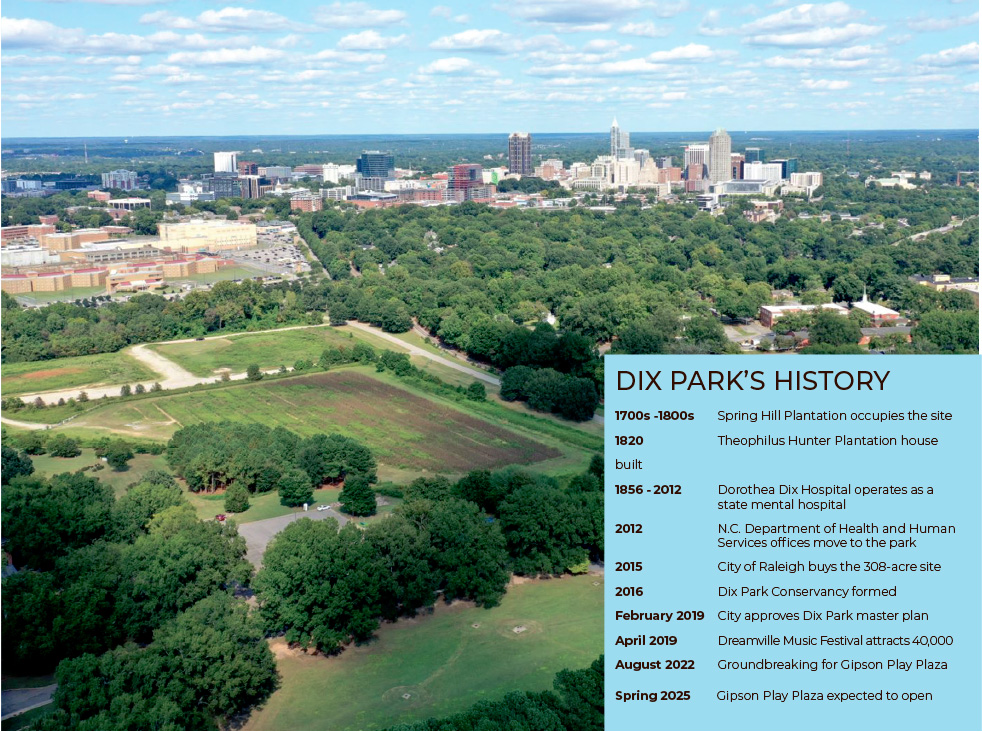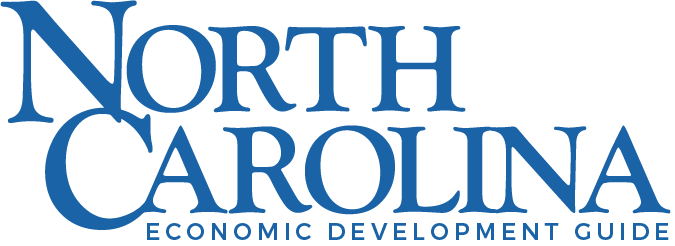Focus: Triangle region, innovation central
RESEARCH TRIANGLE PARK BOASTS NEW LOCATIONS THROUGHOUT FOCUSING ON THE WORKFORCE
For Research Triangle Park’s 7,000 acres and surrounding 14-county territory of innovation, manufacturing and technology, the term “start-up” is more definitive than “shut down,” as new construction start up and incoming business keep the commerce hub ticking.
NC State University’s Centennial Campus, one of three Triangle corner points with Duke University and UNC Chapel Hill, recently constructed a 185,000-square-foot Plant Sciences Building to increase the region’s dominance in agricultural technology, an industry that touches about 112 local companies, according to RTP data.
Coworking spaces, favored by innovators and inventors, are overflowing as a new generation of workforce — the disruptors, whose game-changing products redefine their industries,—rent space on a fresh blueprint that redesigns the concept of office building.
“People all over the world study the model of the Research Triangle Park. I met a guy from Ukraine who studies it in business school,” says Ryan Combs, executive director of the Research Triangle Regional Partnership in Raleigh, an economic development connector for businesses and private-sector growth. “They may not know it’s in North Carolina, but they know the Park.”
Talent and intelligence pair with quality-of-life stats that show that, on an average day, 76 people move to the region. The regional median home value is $175,000 and the median household income is $76,000. The regional labor force is 1 million.
“We do a lot of great things here,” Combs says. “The bar code was created in the Park. Some of the things we’ve done with cancer were done between Duke and Carolina. When you talk about disruptors, look at the healthcare system, with gene therapy. It’s a game-changer because it’s going to drive down the cost of healthcare. Look at the universities and the $3 billion we get a year in research dollars. Then you have companies like Pfizer, and they’re building a $500 million facility in Sanford. You take technologies developed at the universities, incubate and have a company in the urban core, and then you expand to the rural counties and manufacture.”
The education emphasis is strong in the Triangle’s agricultural technology thread. Connected long ago to dependence on tobacco farming, it now includes high-profile RTP-area companies such as Syngenta, BASF and Bayer, part of an approximately 25-company RTP-area AgTech Cluster that employs 74% of the state’s AgTech workforce and overall contributes $1.2 billion to the gross regional product.
“This area could explode as an AgTech hub,” Combs says. “It already is, but it could really take off. We want to get students trained to grow companies.”
North Carolina counts 48,000 farms, which grow more than 80 different products and contribute more than $111 billion to the state economy, according to RTRP figures.
From an overall business perspective, Combs pitches the RTRP counties plus points as its multiple locations for higher education; its $3 billion in federal research money annually for the big-three universities; its proximity to Raleigh-Durham International Airport, with daily non-stops to international locations including Paris and London; and location – a short drive to the mountains, or beaches, or state parks.
The airport added three new international destinations this year, bringing the total to 10, a record for RDU and double the number in 2019, as airlines accommodate growing demand for international flights, including many business travelers.
The expansions come as RDU led the largest 50 U.S. airports in passenger growth last year, according to U.S. Department of Transportation statistics. Boardings gained 22% to a record 14.5 million. That number is projected to grow 7% to 15.5 million in 2024.
In addition to Frankfurt, where Lufthansa offers flights five days a week, RDU added service in June to Panama City, with four flights a week by Copa Airlines. Next up is Mexico City, with Aeromexico launching service in July. That follows Air France, which began flights from Paris in October, taking over the route from Delta Air Lines.
IcelandAir, which started flying four days a week from RDU in 2022, added year-round, daily flights to Reykjavik in May. “We’re the fastest community in 15 years that’s gone from less-than-daily service to daily service” for IcelandAir, says Michael Landguth, CEO of the Raleigh-Durham Airport Authority.
Those new flights are in addition to Air Canada’s service to Montreal and Toronto and American’s London flights. Bahamasair also flies from RDU to Freeport, and American, while Delta and JetBlue fly to Cancun, Mexico.
Landguth says he’d like to attract more flights to Central America and South America due to the state’s large agriculture industry, and also India because of its rapidly growing middle class. “They have income. They want to travel,” he says. “Guess what else they want to do? They want to go to great universities. So we need to make sure we have a good pipeline.”
For now, though, the airport is taking a “momentary pause” and working to make sure the new service is successful, Landguth says. “The worst thing you can do is try to recruit and over recruit and then you start getting failures from an international standpoint,” he says. “We need to get [the new flights] stabilized first.”
For its pitch to Lufthansa, RDU’s authority put together a package of about $3 million in fee waivers and marketing support to Lufthansa. Merz and other companies pledged to buy a certain number of tickets, and state government chipped in $3 million in incentives. “This is what I call a pay-to-play game,” says Landguth. “If you don’t come with the incentives, then they look at the market and say, ‘Obviously you’re not very optimistic that it’s going to work.’”
There’s also improvements happening in Raleigh, the region’s biggest city. In the past year, economic development boosters implemented a plan to make the downtown more attractive for residents and visitors. Art and exercise equipment were added, along with signs directing people to the three big state museums near the state Capitol. They also encouraged restaurants to add outdoor seating on Fayetteville Street, the city’s main drag.
“You have these beautiful wide sidewalks on Fayetteville with the pavers,” says City Councilman Jonathan Melton, who lives downtown and rides his scooter or walks. “I think we have a real opportunity to recalibrate and reinvent that space.”
Now, the group is looking beyond Fayetteville Street. Talks are being held about creating pedestrian and biking paths between Dix Park and the downtown district, especially the Convention Center and hotels. That follows an April trip to Atlanta in which a group of city leaders saw the Georgia capital’s hugely successful Beltline network of public parks, trails, transit and affordable housing projects along a historic 22-mile railroad corridor.
Connecting downtown to Dix Park is “one of the more strategic issues of Raleigh’s next phase,” says former Dix Park CEO Janet Cowell. City leaders and the nonprofit Dix Park Conservancy are redeveloping the former location of a state mental-health hospital that is a mile southeast of downtown’s convention center.
Businesses and real estate developers are paying attention. In the first quarter, 19 new businesses opened downtown, with five closing. There are more than 2,200 residential units (up from 786 units right before COVID started) and 410 hotel rooms under construction, and a $387.5 million expansion of the Raleigh Convention Center will add 300,000 square feet when it’s completed in 2028.
In July, JLL Capital Markets raised $85 million of debt and equity financing for the 252-unit Oldham & Worth, an apartment development located in downtown’s West End neighborhood. It’s the second phase of Kane Realty’s re-development of contractor Clancy & Theys’ headquarters; the redevelopment of Platform apartments is now leasing for $1,250 to $4,000 per month.
Meanwhile, CBRE has begun leasing retail space at The Creamery, a downtown mixed-use development slated to include the 306-unit, 37-story Highline Glenwood apartment building from developer Turnbridge Equities. It is expected to break ground early next year and would be Raleigh’s tallest building.
Like many center cities, Raleigh is fighting perceptions of too much crime and homelessness. The Downtown Raleigh Alliance hired two social workers two years ago to help homeless people find shelters and permanent housing. It also pressed Raleigh police to increase patrols, resulting in a 22% decrease in crime in the past year, with burglaries down 70%. ■


